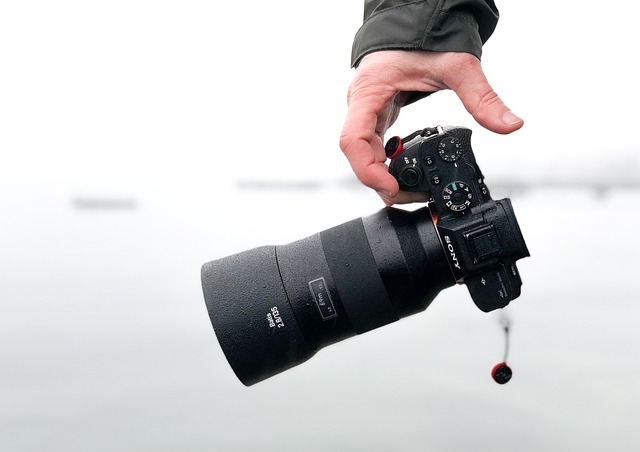Mirrorless cameras offer a compelling alternative to traditional SLRs, boasting advanced autofocus capabilities and a more compact, lightweight design due to their lack of a mirror system. While renowned for their portability and technological advances, potential buyers must evaluate factors such as battery life, sensor size, and lens options to find the right fit for their photography needs.

Testing mirrorless cameras, such as the Nikon Z FC, becomes crucial in ensuring these high-performing cameras meet photographers’ goals and preferences, especially when it comes to image quality and functionality. This article delves into the fundamental aspects of testing mirrorless cameras, including shutter count, body inspections, and overall performance assessments.
Understanding Shutter Count
Understanding the significance of shutter count during mirrorless camera testing is essential for gauging the camera’s usage and predicting its durability. The shutter count reflects how many times the camera’s shutter has fired, which is recorded in the camera’s firmware and the EXIF data of each image. Here’s how to check and interpret shutter count data:
- Checking Shutter Count:
- Review the EXIF data of the latest photo taken to find the shutter count.
- Use the camera manufacturer’s software by connecting the camera via USB.
- Utilise online tools like tools.science.si or shuttercounter.com to read the EXIF data from an image file.
- Interpreting Shutter Count and Performance:
- While high shutter counts in SLRs are often a concern for potential failure, mirrorless cameras are less affected due to their design.
- Each camera model has a different expected shutter life (e.g., 150k shots).
- Remember, the shutter count isn’t the sole determinant of a camera’s lifespan; factors like weather exposure, handling, and usage patterns play roles too.
- Inspecting Shutter Functionality:
- Verify that changing the shutter speed adjusts the exposure in shutter priority mode.
- Check for any delays between pressing the shutter button and the shutter firing, which could indicate wear.
- Perform a visual inspection of the image sensor for any signs of damage, such as scratches or fibres, which could affect image quality.
Through these steps, mirrorless camera testing for shutter count not only reveals the amount of use but also helps assess the mechanical condition and performance of the camera.
Inspecting the Camera Body and Sensor
Inspecting the camera body and sensor is a critical part of mirrorless camera testing. Here are the steps to ensure your camera’s sensor is clean and the body is in good condition:
Sensor Inspection and Cleaning
- Check for Dust on the Sensor:
- Set the camera to Aperture Priority mode and select a narrow aperture.
- Take a photo against a white wall at the minimum focusing distance.
- Review the image on the camera’s LCD, magnified to 100%, to spot any grey spots indicating dust.
- Cleaning the Sensor:
- Use a sensor cleaning brush to remove visible dust near the sensor area.
- Remove the body cap, hold the camera sideways or upside down, and use a blower to remove loose dust.
- Activate the camera’s sensor cleaning function to shake off any remaining dust.
- For stubborn dust, gently wipe the sensor with a one-use cleaning swab dampened with a special cleaning solution.
Body and Lens Mount Inspection
- General Body Check:
- Examine the camera body for any signs of damage, such as dents or scratches.
- Inspect the lens mount for wear and ensure it securely attaches to lenses.
- Verify the integrity of the tripod mount thread and the hot shoe mount.
- Connectivity and Functionality:
- Check electronic terminals, memory card bay, and slot for proper function.
- Test the rear screen for dead or hot pixels and touch sensitivity.
- Ensure the electronic viewfinder (EVF) activates and deactivates correctly with proximity.
Preventative Measures Against Sensor Dust
- Minimise the risk of sensor dust by:
- Turning off the camera before lens changes.
- Keeping the body cap and lenses clean and dust-free.
- Avoiding lens changes in dusty environments and keeping the camera pointed downwards.
- Regularly cleaning the camera bag and storing equipment in ziplock bags.
By following these steps, you can maintain the mirrorless camera in optimal condition, ensuring high-quality images and prolonged camera life.
Testing Camera Functionality and Performance
Testing Camera Functionality and Performance
When conducting mirrorless camera testing, it’s crucial to assess the camera’s functionality and performance meticulously. Here’s a structured approach:
Autofocus System Testing:
- Compose a photo of a small, well-defined subject to test the camera’s autofocus accuracy.
- Photograph a moving subject to evaluate continuous autofocus capabilities.
- Test in various lighting conditions to ensure consistent performance.
Physical and Operational Checks:
- Rotate the physical dial to confirm alignment with the indicated mode.
- Examine the tripod mount and strap connectors for any signs of wear or damage.
- Test touch screen responsiveness if applicable.
- Inspect the EVF and rear screen for dead or defective pixels.
Performance and Quality Evaluations:
- Take multiple shots of both white and dark sources to identify any sensor issues.
- Compare test images in different scenarios, focusing on image sharpness, colour rendition, and noise levels.
- Evaluate the camera’s metering system by photographing scenes with varying brightness.
- Record video to check for any recording or playback issues.
Additional Functional Tests:
- Verify Wi-Fi, Bluetooth, and USB connectivity options function as expected.
- Test the battery life under different usage scenarios to gauge its longevity.
- Run the camera with various lenses to ensure compatibility and performance.
By following these steps, one can thoroughly evaluate the mirrorless camera’s capabilities, ensuring it meets the specific requirements for image and video production.
Conclusion
Through comprehensive evaluations of shutter count, body inspections, and performance testing, this guide has equipped passionate photographers with the key techniques required to test and maintain mirrorless cameras effectively. By understanding how to assess a camera’s shutter life, ensure sensor cleanliness, and check overall functionality, both new buyers and seasoned professionals can make informed decisions about their equipment, safeguarding their investment and artistic expression.
While our guide concludes, the journey in photography continues with each snapshot, so keep testing and capturing those impeccable moments. For those keen on expanding their creative horizons while ensuring their equipment meets the highest standards, consider exploring more resources and diagnostics tools to maintain your mirrorless camera in peak condition.



